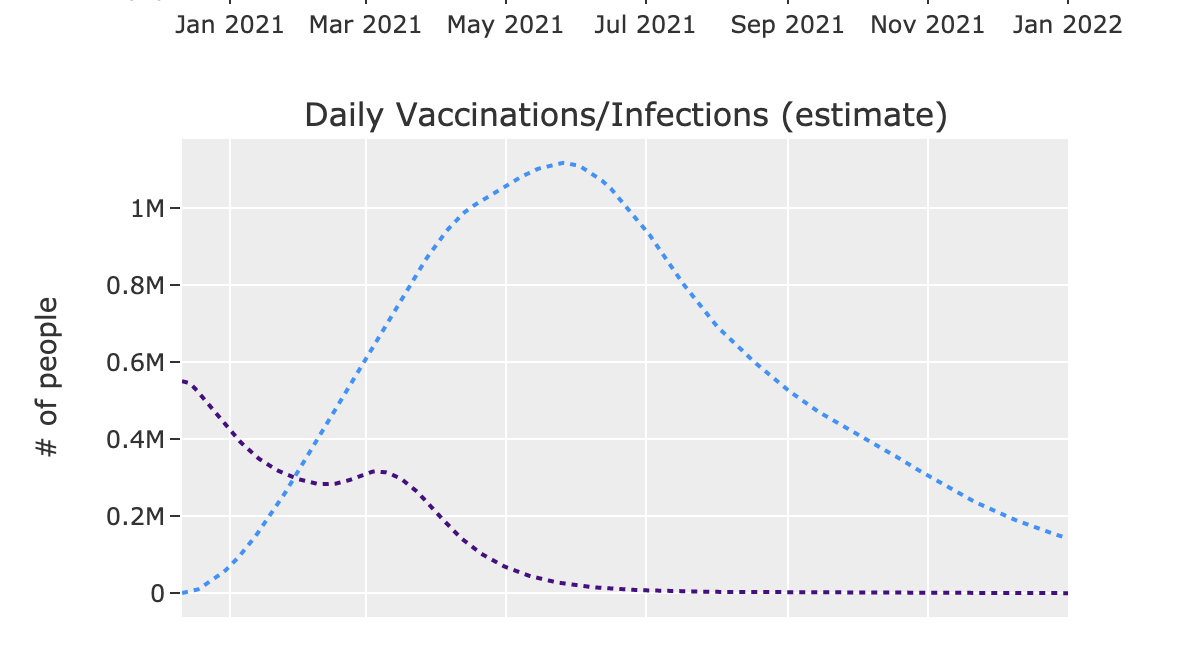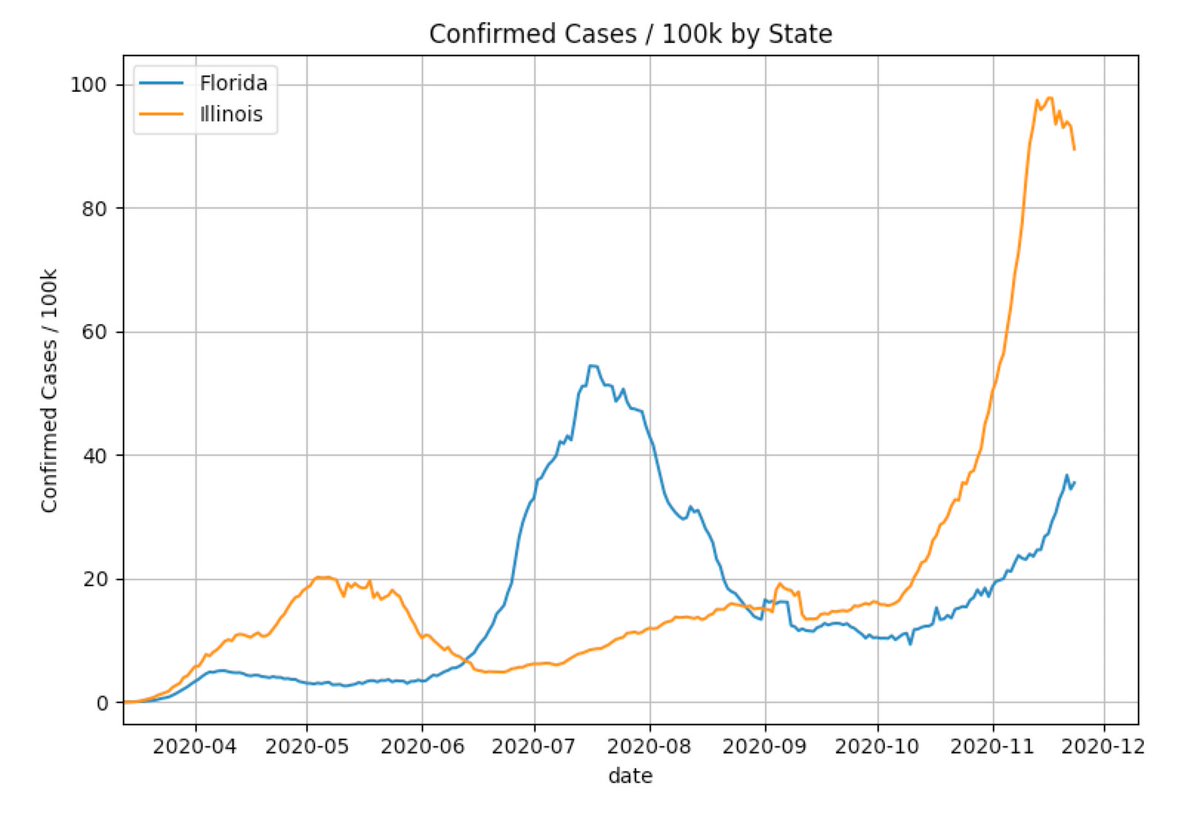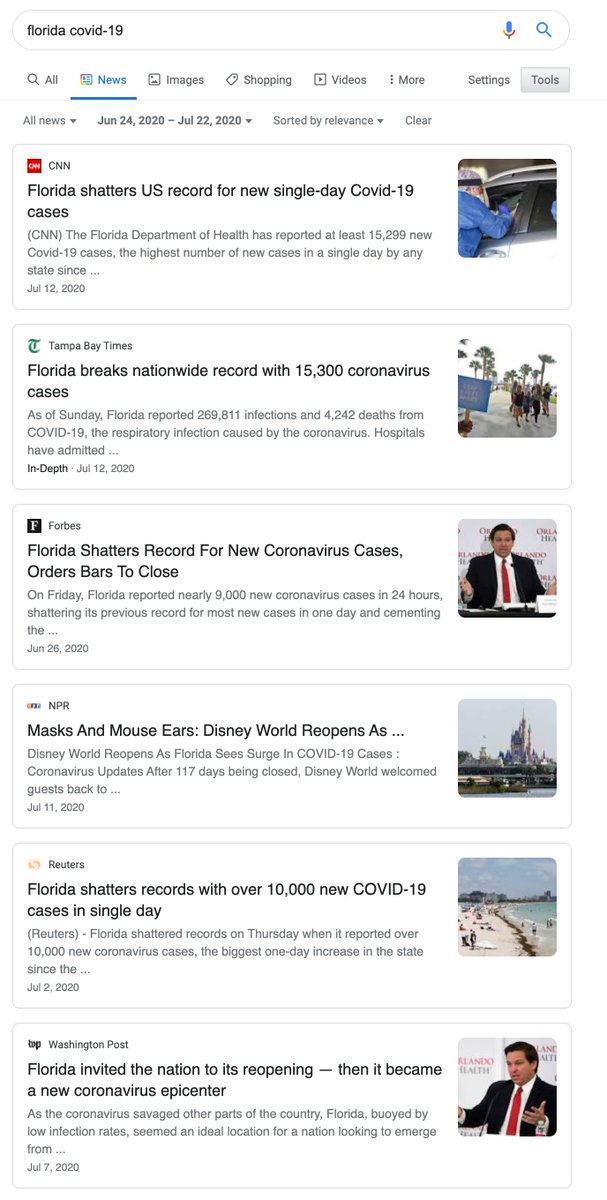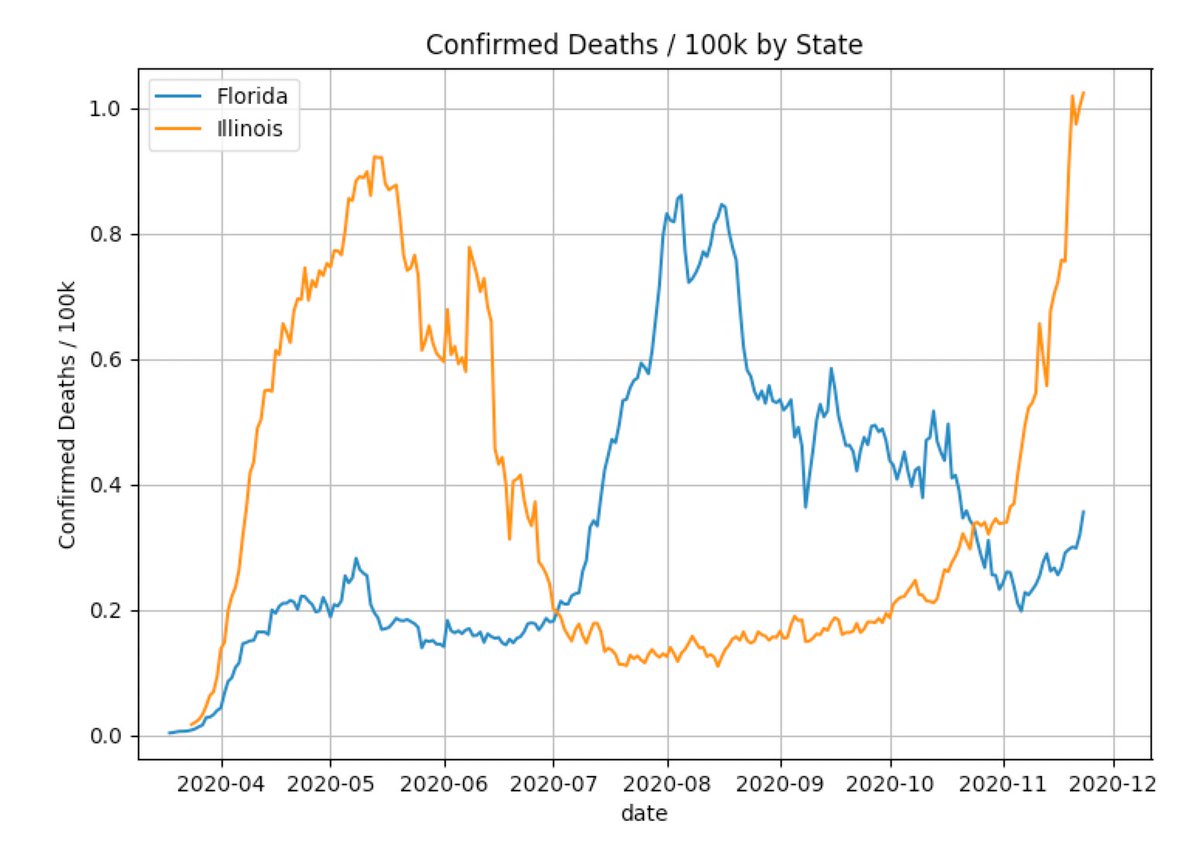
By many accounts, the US will have 100 million vaccine doses by February.
I estimated yesterday that we need ~100 million people to gain immunity via vaccination to reach herd immunity.
So *theoretically*, we can reach herd immunity by March if we vaccinate the right people.
I estimated yesterday that we need ~100 million people to gain immunity via vaccination to reach herd immunity.
So *theoretically*, we can reach herd immunity by March if we vaccinate the right people.

This involves allocating the initial (limited) supply of vaccines based on two main criteria:
1) Each individual receives only one dose instead of two.
2) We prioritize individuals who have not had a prior infection.
This would be temporary, until supply catches up.
1) Each individual receives only one dose instead of two.
2) We prioritize individuals who have not had a prior infection.
This would be temporary, until supply catches up.
There is some evidence, though inconclusive, that even one dose of the vaccine can have reasonable efficacy (potentially >80%).
https://twitter.com/zeynep/status/1337047714341785605
With the existing approach, my model estimates that by the time the US reaches herd immunity in summer 2021, we would've distributed ~300M doses.
That's an "efficiency" of 100M / 300M = 33%
If we follow the two criteria from above, I believe we can double the efficiency to 70%.
That's an "efficiency" of 100M / 300M = 33%
If we follow the two criteria from above, I believe we can double the efficiency to 70%.
Here's my thread from yesterday that links to all the assumptions I made to model vaccine rollout:
Under the existing approach, I expect the US to reach herd immunity by June/July 2021.
https://twitter.com/youyanggu/status/1337147909955964929
Under the existing approach, I expect the US to reach herd immunity by June/July 2021.
Reaching herd immunity two or three months sooner will have profound benefits throughout society, ranging from fewer cases & deaths to faster economic recovery.
What is the downside? I can't think of many that are on the same scale.
What is the downside? I can't think of many that are on the same scale.
Of course, I'm not necessarily advocating for this approach. More studies would need to be carried out first. But I do feel like this is not being talked about enough.
@michaelmina_lab and @zeynep have also raised this issue (I recommend the thread).
@michaelmina_lab and @zeynep have also raised this issue (I recommend the thread).
https://twitter.com/michaelmina_lab/status/1337078184597217281
There are those that believe this approach would be a disaster:
The reasoning hinges on a set of untested assumptions. My response would be: why are we not testing these assumptions? The stakes are about as high as you can get.
https://twitter.com/CarlosdelRio7/status/1337376734967115777
The reasoning hinges on a set of untested assumptions. My response would be: why are we not testing these assumptions? The stakes are about as high as you can get.
This approach does not mean every individual can only receive one dose ever.
I imagine individuals can receive a second dose when supply is no longer the bottleneck.
Since I'm not an expert, I'm not too familiar with the downsides of taking a second dose months after the first.
I imagine individuals can receive a second dose when supply is no longer the bottleneck.
Since I'm not an expert, I'm not too familiar with the downsides of taking a second dose months after the first.
If this approach proves viable, the question would be: would you be willing to hold off on taking a second dose of the vaccine if we can get a much sooner "back to normal"?
My guess is that most people would say "yes".
My guess is that most people would say "yes".
Former CDC Director @DrTomFrieden and @EricTopol have also advocated for the idea of deferring vaccination for people with prior infection, especially those that are low-risk.
https://twitter.com/DrTomFrieden/status/1337244680833077248
This is fundamentally going to be a trade-off. But we make tradeoffs all the time.
Notable examples:
- Keeping the economy open vs implementing restrictions to curb spread
- Making the general public wait so we can vaccinate high-risk individuals first
Notable examples:
- Keeping the economy open vs implementing restrictions to curb spread
- Making the general public wait so we can vaccinate high-risk individuals first
Realistically, this approach is unlikely to be executed in the US.
But the world is not just the US. There are still 7+ billion people that need to be vaccinated.
Furthermore, as scientists, we are always trying to figure out how we can do better the next time around.
But the world is not just the US. There are still 7+ billion people that need to be vaccinated.
Furthermore, as scientists, we are always trying to figure out how we can do better the next time around.
Anyways, I'm curious to hear people's thoughts. I'm sure I missed a lot of finer details in the proposed approach.
But that shouldn't change the main question, which is: "when it comes to vaccine distribution, is it worth sacrificing effectiveness for perfection?"
But that shouldn't change the main question, which is: "when it comes to vaccine distribution, is it worth sacrificing effectiveness for perfection?"
I hope to see a bigger push by the public health community to recommend deferring vaccinations for individuals who have had a prior COVID-19 infection.
It needs to be emphasized that reinfection is very, very rare.
It needs to be emphasized that reinfection is very, very rare.
https://twitter.com/WesPegden/status/1337508516739821570
• • •
Missing some Tweet in this thread? You can try to
force a refresh















